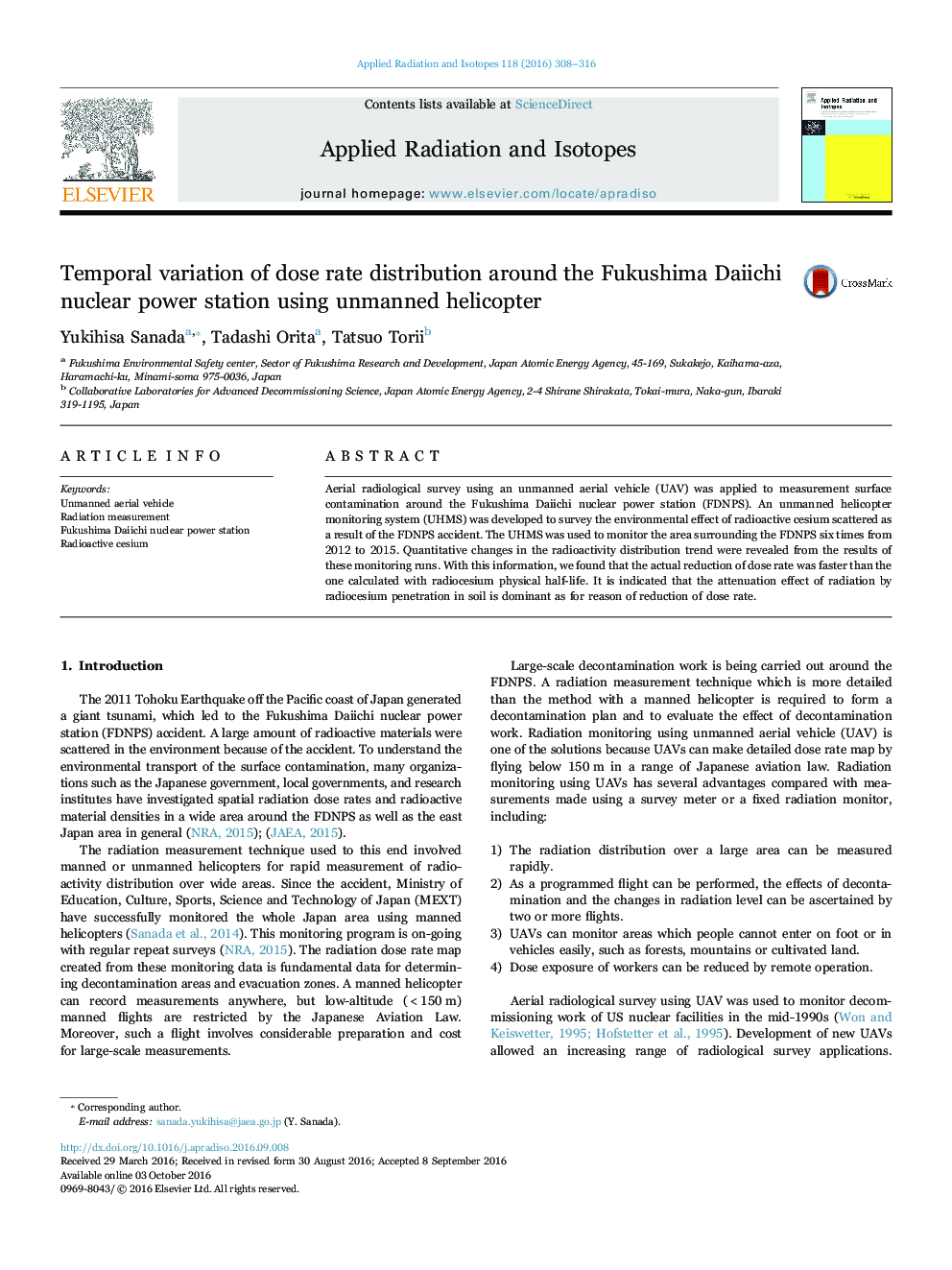| Article ID | Journal | Published Year | Pages | File Type |
|---|---|---|---|---|
| 8209099 | Applied Radiation and Isotopes | 2016 | 9 Pages |
Abstract
Aerial radiological survey using an unmanned aerial vehicle (UAV) was applied to measurement surface contamination around the Fukushima Daiichi nuclear power station (FDNPS). An unmanned helicopter monitoring system (UHMS) was developed to survey the environmental effect of radioactive cesium scattered as a result of the FDNPS accident. The UHMS was used to monitor the area surrounding the FDNPS six times from 2012 to 2015. Quantitative changes in the radioactivity distribution trend were revealed from the results of these monitoring runs. With this information, we found that the actual reduction of dose rate was faster than the one calculated with radiocesium physical half-life. It is indicated that the attenuation effect of radiation by radiocesium penetration in soil is dominant as for reason of reduction of dose rate.
Keywords
Related Topics
Physical Sciences and Engineering
Physics and Astronomy
Radiation
Authors
Yukihisa Sanada, Tadashi Orita, Tatsuo Torii,
